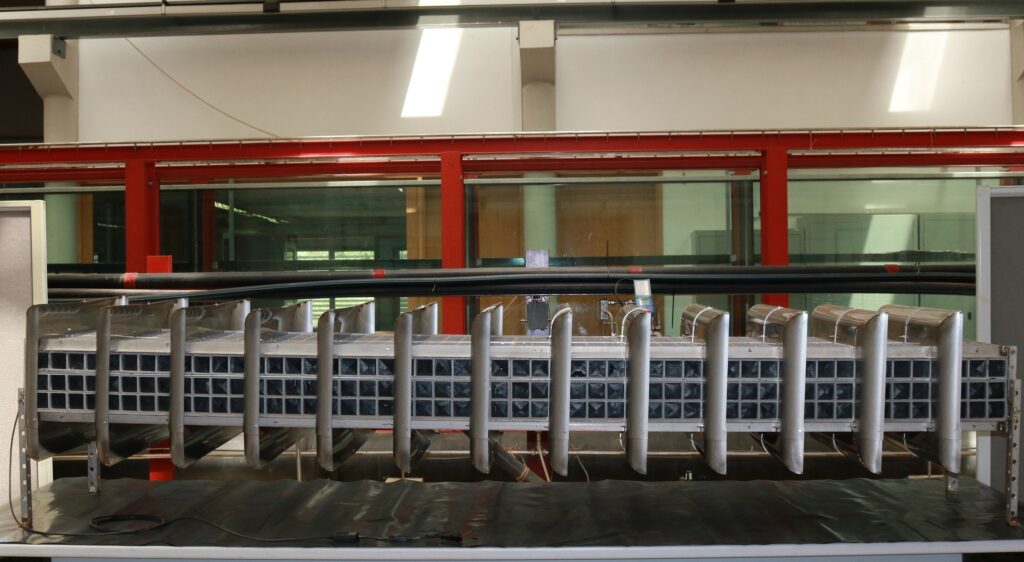A team from the University of Coimbra (UC) has developed an innovative device to convert the energy stored in sea waves into electrical energy. The invention is already protected by an international patent.
The device, designated as REEFS, an acronym for Renewable Electric Energy From Sea, is the result of eight years of research carried out at the Hydraulics, Water Resources and Environment Laboratory of the Civil Engineering Department (DC), at Faculty of Science and Technology of the University of Coimbra.
This wave energy converter developed at the UC, already granted an international patent, is a modular coastal device that is completely submerged, invisible to the sea surface. «It is supported on pillars and the rest of the seabed is free for all kinds of marine processes», explains project leader José Lopes de Almeida.
On the other hand, he emphasizes, it is a device that “seeks to use technologies that already exist, namely ultra-low head turbines that are used in mini-hydro plants and that have recently become competitive in commercial terms. It is possible to migrate this technology to the sea and apply it precisely to take advantage of the unevenness created by the waves, which on our western coast often present heights of 1 to 5 meters”.
Basically, summarizes the scientist, «what the device does is transform the alternating movement of sea waves into a continuous flow of water inside the REEFS converter. This flow, created between the crest and trough of the waves, can be used to drive the aforementioned ultra-low head mini-hydro turbines», which represents a considerable technological leap, as «we don't need to develop a technology from scratch, we can adapt a existing hydroelectric technology'.
In addition, this technology contributes to mitigating coastal erosion, as it can act as an artificial reef, inducing the early breaking of waves to remove some of their energy from the start before they reach the shoreline.
José Lopes de Almeida recalls that research in this area is currently of particular relevance given the current international situation caused by the war in Ukraine.
“The current situation highlights Europe's extraordinary vulnerability in relation to its energy dependence. For example, in the case of Portugal, the country still imports around 2/3 of its energy resources. Therefore, looking at the endogenous marine resources and trying to use them, creating value for the economy, is a desideratum that is imposed, particularly in Portugal, because it is a country that has a very extensive coastline in relation to its territorial area».
However, for this technological solution to reach the market, further studies and tests are still needed, explains the project coordinator: «the concept is proven. We demonstrated in the laboratory the transformation of the entire chain – from the wave to the production of electricity. However, to reach the commercial phase, the device has to be optimized and tested on successively larger scales until we install a pilot project at sea, only then can we move on to the commercialization phase of the technology».
In this sense, the team, which, in addition to José Lopes de Almeida, includes Fernando Seabra Santos, Aldina Santiago, Maria Constança Rigueiro and Daniel Oliveira, is applying for funding, with the support of UC Business – UC Technology Transfer Office –, which allow for an installation at sea, on the Portuguese coast, «a very important step to test, in real conditions, the performance of the device and evaluate all the constraints that may arise from its installation in a marine environment».
Despite the path that the project still has ahead of it, the estimate is that, when the product is ready to be installed at sea, it will evolve in competitiveness, as happened with wind energy. «From a competitive point of view, it has a potential comparable to that of wind energy, although the market is not as comprehensive, with the advantage of not having an impact on the landscape, providing greater predictability in production and being located on the coast where most of the of economic activity», concludes José Lopes de Almeida.
The project presentation video can be seen here:





















Comments